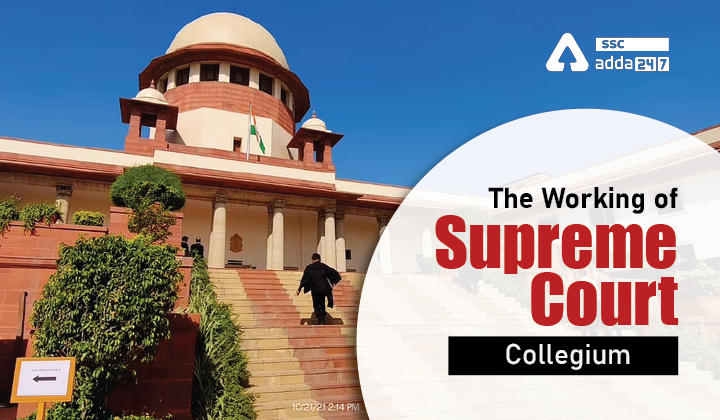Table of Contents
The Working of Supreme Court Collegium- Relevance for UPSC Exam
General Studies II- Structure, organization and functioning of the Executive and the Judiciary—Ministries and Departments of the Government; pressure groups and formal/informal associations and their role in the Polity.
In News
The Chief Justice of India (CJI) N.V. Ramana’s tenure is drawing to an end in a few days. This will mark the end of his Collegium.
Collegium System
- The collegium system was born out of years of friction between the judiciary and the executive.
- The hostility was further accentuated by instances of court-packing (the practice of changing the composition of judges in a court), mass transfer of HC judges and two supersessions to the office of the CJI in the 1970s.
- The Three Judges cases saw the evolution of the collegium system.
Working
- The collegium of the CJI and four senior-most judges of the Supreme Court make recommendations for appointments to the apex court and High Courts.
- The collegium can veto the government if the names are sent back by the latter for reconsideration.
- The basic tenet behind the collegium system is that the judiciary should have primacy over the government in matters of appointments and transfers in order to remain independent.
Judicial Appointments to the Supreme Court
- The CJI and the judges of the Supreme Court are appointed by the President under clause (2) of Article 124 of the Constitution.
- The appointment to the office of the CJI should be of the senior-most judge of the Supreme Court considered fit to hold the office and the outgoing CJI recommends his successor.
- The Union Law Minister forwards the recommendation to the PM who, in turn, advises the President.
- In the case of an appointment of a Supreme Court judge, when a vacancy is expected to arise in the apex court, the collegium would recommend a candidate to the Union Law Minister.
- The CJI would also ascertain the views of the senior-most judges in the Supreme Court, who hail from the High Court from where the person recommended comes from.
- The opinions of each member of the Collegium and other judges consulted should be made in writing.
- The Law Minister would forward the Collegium recommendation to the Prime Minister, who would advise the President in the matter of appointment.
- The CJs of High Courts are appointed as per the policy of having Chief Justices from outside the respective States. The Collegium takes this call.
- High Court judges are recommended by a Collegium comprising the CJI and two senior-most judges though the proposal, is initiated by the Chief Justice of the High Court concerned in consultation with two senior-most colleagues.
- The recommendation is sent to the Chief Minister, who advises the Governor to send the proposal to the Union Law Minister.
- The Collegium also recommends the transfer of Chief Justices and other judges.
- Article 222 of the Constitution provides for the transfer of a judge from one High Court to another.
Criticism
- Lack of transparency
- It has been accused of nepotism.
- The government’s efforts to amend the Constitution and bring a National Judicial Appointments Commission was struck down by a Constitution Bench.
Way Forward
- Zone of consideration must be expanded to avoid criticism of favoring nepotism.
- Transparency should be maintained in Collegium as well as in the process of judicial appointments.




 TSPSC Group 1 Question Paper 2024, Downl...
TSPSC Group 1 Question Paper 2024, Downl...
 TSPSC Group 1 Answer key 2024 Out, Downl...
TSPSC Group 1 Answer key 2024 Out, Downl...
 UPSC Prelims 2024 Question Paper, Downlo...
UPSC Prelims 2024 Question Paper, Downlo...




